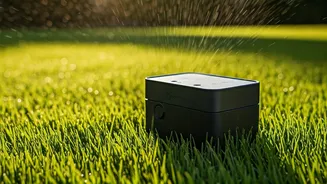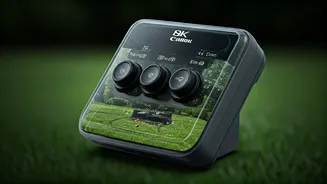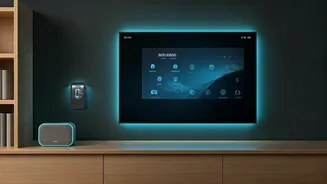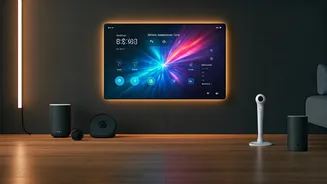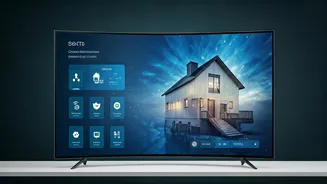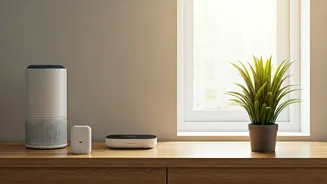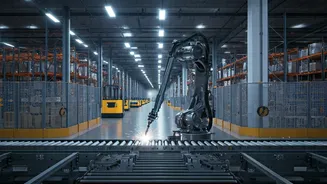Smart Watering Revolution
Smart sprinkler controllers represent a significant advancement in lawn care. Unlike traditional timers, these systems use data to precisely manage irrigation.
They typically connect to your home's Wi-Fi network and can access local weather forecasts and soil moisture data, making for more efficient watering. This intelligent approach prevents both under-watering and over-watering. The impact of these devices extends beyond convenience, directly influencing water conservation efforts and reducing utility bills. By adjusting watering schedules based on real-time conditions, they contribute to a greener planet by cutting down on water waste. The technology also allows users to remotely control and monitor their sprinklers, providing unparalleled control and flexibility.
Key Features Explored
Several essential features define a good smart sprinkler controller. Weather-based scheduling is fundamental; these controllers can adjust watering based on temperature, rainfall, and wind. Smart controllers often integrate with local weather services to make informed decisions about when and how much to water. Another critical feature is zone control, which allows for different watering schedules for various areas of your yard. Different plants need different watering amounts, and this functionality helps cater to their specific needs. User-friendly mobile apps are a common feature. These apps allow users to easily program, monitor, and adjust their sprinklers from anywhere. The best controllers also offer water usage tracking, providing valuable insights into water consumption, which in turn helps manage your water bill and make adjustments as needed. Compatibility with smart home platforms, like Amazon Alexa or Google Assistant, is also often available, enhancing the user experience.
Installation Considerations
Installing a smart sprinkler controller involves a few key steps, but the process is usually straightforward. You’ll first need to remove your old controller, disconnecting and labeling the wires to ensure an easy transition. The next step is to mount the new controller, often using the same bracket as the old one. Wire connections are made according to the labels, matching the wires from your sprinkler valves to the corresponding zones on the new controller. Next, you connect the controller to your home Wi-Fi network using the mobile app or the controller's interface. Finally, you program your zones and set up your watering schedules, taking into account the types of plants and soil in each zone. Remember to consult the manufacturer's instructions for the specific model you're installing.
Choosing the Right Model
Several factors should guide your choice when selecting a smart sprinkler controller. The size of your yard and the number of zones you need to cover are primary considerations. Some controllers support a few zones, while others can handle a larger number. Consider the features that are most important to you. If you are very hands-on, you might want more complex programming and remote control options. Evaluate the controller's weather data capabilities. How effectively does it integrate with weather services? Check user reviews and ratings to get an idea of the controller's reliability and ease of use. Ensure that the controller is compatible with your existing sprinkler system and any other smart home devices you use. Consider the long-term costs, including any subscription fees for advanced features, and compare pricing across different models to find the best value for your needs.
Benefits of Smart Systems
The advantages of switching to a smart sprinkler controller are numerous. The most significant is water conservation. By using weather data and adjusting watering schedules, these controllers prevent water waste. This efficiency translates into lower water bills, providing direct financial savings. Smart controllers help improve the health of your lawn and garden. Optimized watering prevents over-watering, which can lead to root rot and other problems. Remote control and monitoring provide convenience, allowing you to manage your sprinklers from anywhere. They integrate seamlessly with smart home platforms, enhancing your smart home setup. Smart controllers can also help improve property values by showcasing a commitment to water conservation and smart home technology.
